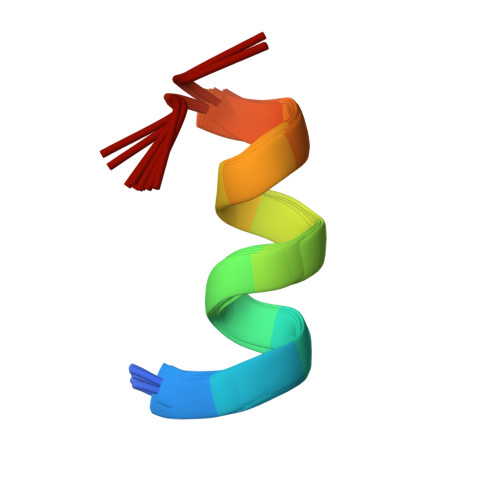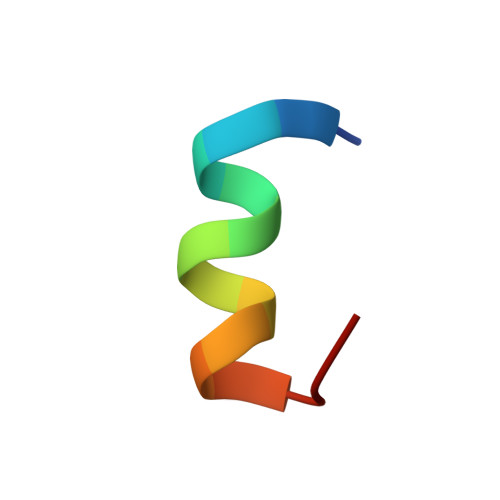NMR structure of lung surfactant peptide SP-B(11-25).
Kurutz, J.W., Lee, K.Y.(2002) Biochemistry 41: 9627-9636
- PubMed: 12135384
- DOI: https://doi.org/10.1021/bi016077x
- Primary Citation of Related Structures:
1KMR - PubMed Abstract:
Surfactant protein B (SP-B) is a 79-residue essential component of lung surfactant, the film of lipid and protein lining the alveoli, and is the subject of great interest for its role in lung surfactant replacement therapies. Here we report circular dichroism results and the solution NMR structure of SP-B(11-25) (CRALIKRIQAMIPKG) dissolved in CD(3)OH at 5 degrees C. This is the first report of NMR data related to the protein SP-B, whose structure promises to help elucidate the mechanism of its function. Sequence-specific resonance assignments were made for all observable (1)H NMR signals on the basis of standard 2D NMR methods. Structures were determined by the simulated annealing method using restraints derived from 2D NOESY data. The calculations yielded 17 energy-minimized structures, three of which were subjected to 0.95 ns of restrained dynamics to assess the relevance of the static structures to more realistic dynamic behavior. Our CD and NMR data confirm that this segment is an amphiphilic alpha helix from approximately residue L14 through M21. The backbone heavy-atom RMSD for residues L14 through M21 is 0.09 +/- 0.12 A, and the backbone heavy-atom RMSD for the whole peptide is 0.96 +/- 2.45 A, the difference reflecting fraying at the termini. Aside from the disordered termini, the minimized structures represent dynamic structures well. Structural similarity to the homologous regions of related saposin-like proteins and the importance of the distribution of polar residues about the helix axis are discussed.
Organizational Affiliation:
Department of Chemistry, Institute for Biophysical Dynamics, and James Franck Institute, University of Chicago, 5735 S. Ellis Ave., Chicago, Illinois 60637, USA. jkurutz@uchicago.edu
















